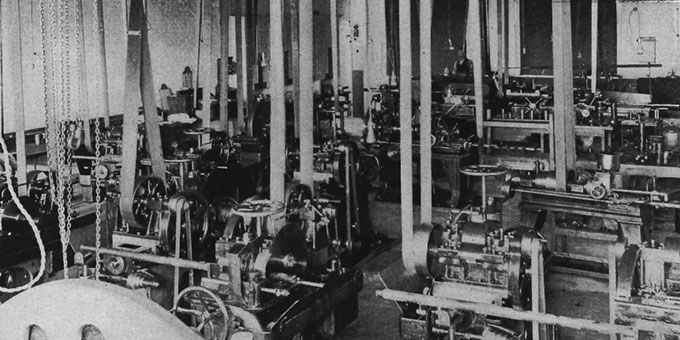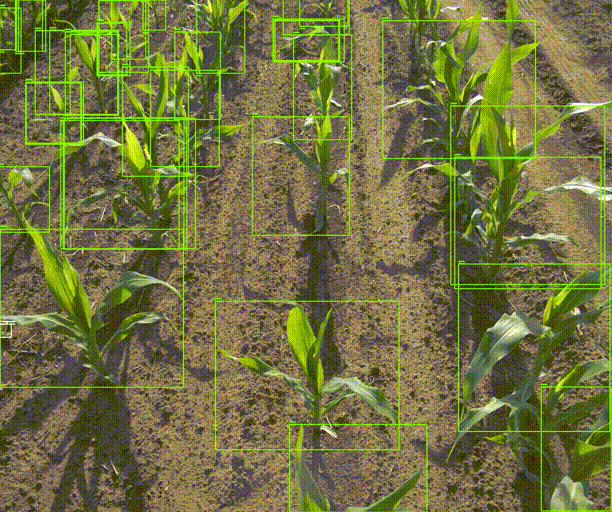AI has enabled us to notice how food production systems have been organized around the scarcity of knowledge-intensive human skills, such as perception and reasoning.
 Are We Underestimating AI's Likely Impact on the Food System?
Are We Underestimating AI's Likely Impact on the Food System?

Elliott Grant Founder, CEO | mineral
Lessons from the steam-to-electric power transition.
This analogy gives us a way to imagine and anticipate the potential impact of AI on the food system. AI will decentralize knowledge in the agriculture system, just as electricity decentralized motive power in manufacturing. The new paradigm of AI is enabling us to notice how food production systems have been organized around the scarcity of knowledge-intensive human skills, such as perception and reasoning.
As AI becomes able to replicate human-level performance for certain tasks, those tasks can be done more efficiently and ‘at the edge’ (edge computing moves computing resources from data centers to the edge of the network, where it is closest to users, devices and data sources – just like electric motors). For agriculture, this means rather than organizing around the scarcity and cost of human perception and reasoning - tasks can be pushed to exactly where they are needed, when they are needed, and performed at greater scale.
Based on our team’s experience, there are many ways we see AI impacting the structure of today’s agriculture system. Here are a few:

Perception will be central to the future of sustainable agriculture.
-
Improved Confidence. Today, functions exist in the food system to help farmers manage the inherent uncertainty in crop production, such as crop trading, aggregation and hedging services, or by storing and selling inputs. Better AI-enabled forecasts should mean lower safety stocks, less capacity needed in the system, and more options for farmers. This reduced uncertainty could also drive a burst of innovation in risk management products like debt and insurance, further benefitting farmers.
-
Decentralized expertise. Agronomists and research extension officers, who help farmers integrate vast amounts of data generated by modern agriculture, are not uniformly accessible. A trusted advisor may retire, or be stretched too thin by covering hundreds of square miles. And if a farmer wants to grow an unconventional crop or use different practices, they may find the local expertise lacking. We’re seeing the early signs of AI beginning to assist agronomists with more localized, context-aware advice, readily available anywhere and anytime. Like the electric motor helped small businesses specialize, this could help smaller farms remain competitive, and encourage more specialization in crops or practices, such as regenerative farming. A new farmer who hopes to grow blueberries, for example, could improve their operations more quickly with an AI helper, reducing their risk and making them more attractive for investment and lending.
Plant perception will become ubiquitous, and central to the future of sustainable agriculture.”— Elliott Grant, Mineral CEO
-
Distributed perception-heavy tasks. Plant perception – the AI-powered ability for computer vision to capture and understand precise information from plants – will become ubiquitous, and central to the future of sustainable agriculture. Today, functions like crop breeding, crop protection development, quality inspection, agronomic decision-making, and correct chemical and fertilizer applications all rely on skilled, well-trained human observation. Many of these tedious tasks can be augmented by AI, freeing up human experts to do higher value work, to increase their scope, to cover more farms or conduct more field trials. Take breeding as an example. In theory, breeders would like to run crop trials in locations that closely match the target environment for the variety. Yet in practice, that isn’t often possible, as skilled breeders are very scarce and collecting data is labor-, time- and skill-intensive. With AI’s integration into phenotyping tasks, running trials on 10x or 10,000x more locations becomes conceivable. AI could allow breeders to rethink the logic of trial design.
-
Change Catalyzed by Smart Equipment. As equipment becomes ‘smarter’ and more precise using perception and AI, the way farmers create value will change. Just as electrification of machine tools enabled new ways of creating value (e.g. Henry Ford’s moving production line), AI will grow and reshuffle the value added by equipment and input companies, retailers, service providers, co-operatives and farmers. In some cases, farmers will be able to efficiently operate larger properties, driving farm consolidation. More complex and expensive equipment may also drive growth of service providers, who will have the skills and the scale to utilize these machines - serving smaller and more specialized farms. AI-informed precision application may reduce the volume of chemicals and fertilizer used, while also creating new markets for products, such as biologicals, that must be used sparingly.
Just like it was for those steam-engine era factory designers 100 years ago, a different ecosystem can be hard to imagine. And just like the steam-to-electric power transition, the impact of AI won’t be felt overnight. Ecosystems - especially those as complex as agriculture - have well-worn habits that are given up only when a new way is proven. AI will make inroads into the periphery at first, improving or augmenting current ways of working. And as the technology matures, farmers and entrepreneurs will discover ways to do things radically differently. New organizational structures and novel value-sharing business models will emerge that outperform the current way of doing things.
AI holds immense potential to drive the system-level transformation that will help farmers achieve more sustainable outcomes, be more resilient to a changing climate and unlock new value. The biggest barrier may just be our limited ability to imagine it!
The content & opinions in this article are the author’s and do not necessarily represent the views of AgriTechTomorrow
Comments (0)
This post does not have any comments. Be the first to leave a comment below.
Featured Product

